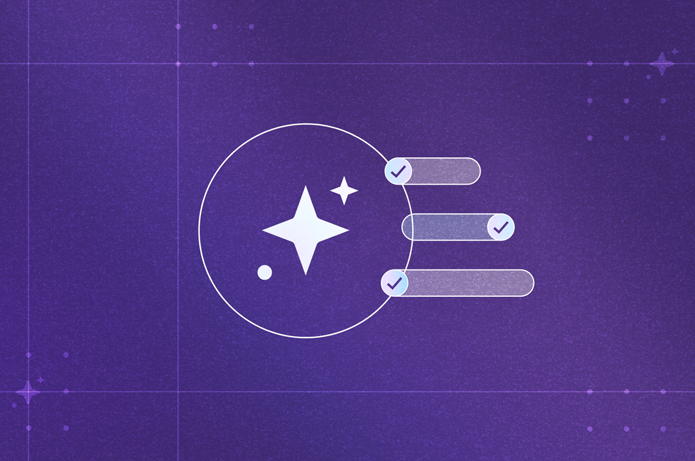Navigating the landscape of employee mental health benefits can be intricate. This guide will clarify the definition of Employee Assistance Programs (EAPs), their conventional limitations, and how contemporary, enhanced solutions, such as those offered by Spring Health, are revolutionizing workplace well-being.
By highlighting significant advancements in access, care quality, and measurable outcomes, you’ll be equipped with the knowledge to make informed decisions for your most valuable asset: your people.
Key terms to know
- EAP (Employee Assistance Program): A voluntary, employer-sponsored program offering confidential assessments, short-term counseling, and referrals to help employees address personal and work-related issues.
- ROI (return on investment): A financial metric that quantifies the benefits generated from an investment relative to its cost, frequently used to assess the effectiveness of mental health initiatives.
- Presenteeism: The state where employees are physically present at work but are not fully productive due to factors like illness, stress, or other distractions.
- Continuum of care: A comprehensive, integrated system of services designed to address an individual's entire spectrum of mental health needs, from preventive support to high-acuity treatment.
- High-acuity conditions: Severe or complex mental health conditions that necessitate intensive or specialized therapeutic interventions.
Contain costs through better care
Don't overlook the role improved behavioral healthcare can have on containing rising healthcare costs.
The difference the right solution can make
When employees thrive, organizations directly benefit, experiencing enhanced performance, reduced turnover, and fewer sick days. Businesses have long understood that investing in mental wellbeing leads to more content employees and a healthier bottom line.
Providing comprehensive mental health benefits is no longer a luxury; it is a strategic imperative in today's competitive talent market. At Spring Health, comprehensive, evidence-based mental healthcare is not merely an employee perk; it is a strategic investment that fundamentally improves employee well-being and drives measurable business success.
Spring Health's advanced solutions are designed to deliver:
- Reduced turnover: Cultivate a supportive environment that significantly boosts employee loyalty and retention.
- Increased productivity: Empower employees to flourish personally and professionally, translating into higher organizational performance.
- Measurable ROI: Achieve substantial financial returns through decreased healthcare costs and improved presenteeism.
Your mental health solution matters
Over 90% of U.S. employees say it is very or somewhat important to them to work for an organization that provides support for employee mental health. This finding aligns with trends indicating that robust mental health support is a primary driver for employee retention. Integrating strong mental health benefits into compensation packages is crucial for both employee retention and engagement.
While EAPs have been a common approach to provide mental health support, traditional EAPs frequently fall short in meeting the diverse and evolving needs of today's workforce. This is often due to prolonged wait times, a lack of culturally competent care, and limited engagement options. Consequently, legacy EAP programs typically suffer from low utilization rates and less-than-optimal clinical outcomes.
What is an EAP?
An EAP is a workplace benefit that helps employees navigate personal and professional challenges through confidential support services. EAPs typically include short-term counseling, family and relationship support, legal and financial guidance, and referrals for substance use or mental health care.
These programs can cover a wide range of personal stressors, including financial difficulties, social issues, substance use concerns, mental health challenges, workplace relationship conflicts, and more. The primary objective of an EAP is to resolve these issues before they significantly affect an employee's work performance.
With this goal in mind, EAPs have the potential to help organizations mitigate the adverse effects of workplace stress and maintain high productivity levels. However, the true success of an EAP largely hinges on its adoption rate and whether the available services genuinely align with employee needs.
How mature is your mental health program?
Benchmark your current solution, identify key gaps, and explore best-in-class strategies to elevate mental health outcomes.
Advantages of EAP programs
Having defined EAP programs and their various types, let's explore their potential benefits.
EAP programs contribute to employee wellbeing
When effectively used, an EAP program can significantly enhance employees' overall wellbeing, boost engagement, reduce absenteeism, and improve performance. A comprehensive EAP can address a diverse array of issues, including:
- Social relationships
- Family situations
- Substance use concerns
- Traumatic events
- Mental wellness support
- Educational programs
- Career transition guidance
By providing resources that help employees navigate challenging life events, employers can alleviate employee stress, potentially leading to improved work performance and fostering a more resilient workforce. For instance, an employee struggling with financial stress might find targeted resources through an EAP, allowing them to better focus on their responsibilities at work.
Mental wellness increases performance at work
A 2022 study indicated that occupational stress directly impacts work performance, with high stress levels consistently correlated with lower productivity. Employees who engage with EAP programs can reduce personal stress, thereby improving their work performance. By helping employees manage stress levels, EAPs can decrease absenteeism, increase presenteeism, and alleviate overall workplace stress.
EAPs can improve company ROI
By addressing both workplace issues and personal stressors, EAPs have the potential to help organizations contain costs and drive ROI. With the right EAP, higher utilization should lead to higher ROI. Clear, credible proof can show up in a number of ways, including savings in health plan costs, retention, and productivity.
Disadvantages of traditional EAPs
In theory, EAPs can reduce stress-related issues that impact work performance. However, traditional models are severely limited in their capacity to effectively support the modern workforce, where wellness and mental health are paramount. These inherent disadvantages often prevent traditional EAP programs from realizing their full potential.
| Traditional EAP limitations | Impact on employees | Business consequences |
|---|---|---|
| Limited session caps (typically 8 or fewer) | Insufficient treatment duration, often superficial | Poor clinical outcomes, recurring issues, employee frustration |
| Long wait times | Delayed intervention, problems escalate | Decreased productivity, higher absenteeism, increased costs |
| Lack of provider diversity | Cultural barriers, poor fit, reduced trust | Low engagement rates, ineffective support, perception of inadequate benefits |
| Opaque cost structures & ROI | Hidden costs, difficult ROI evaluation | Budget inefficiencies, difficulty in justifying investment, lack of strategic planning |
| No standardized measurement or tracking | Unknown effectiveness, inconsistent quality | Inability to optimize EAP pricing and ROI, missed opportunities for improvement |
Focused on short-term support
Instead of fostering long-term wellness, traditional EAPs may focus on short-term crisis intervention. While many employees believe they can successfully prevent severe mental health conditions through routine mental health prioritization, traditional EAPs often fail to provide care modalities that support this preventive approach.
Limited to traditional therapy models
Traditional EAPs generally offer employees access to counseling but often fall short by not providing a diverse range of choices. EAPs are commonly limited to traditional therapy models that primarily offer 1:1 therapy. However, research indicates that many employees are less inclined to engage with programs that lack options for self-guided support, culturally centered care, blended care models with online components, and group sessions.
Opaque EAP pricing and lack of reporting for analysis
Accurate data is essential for assessing the success of any program. Since traditional EAPs often operate with disjointed systems, there is a pervasive lack of comprehensive reporting for employers on adoption, engagement, and ongoing participation. Traditional EAP utilization rates are notoriously low, typically hovering around 3-5% .
Consequently, it is challenging for employers to obtain precise data reflecting true ROI, making it difficult to assess the actual value of their EAP pricing structure. Organizations seeking clarity should learn how net ROI belongs front and center in their EAP RFP process.
Employers don't have control over care quality
Most employers partner with external EAPs, which often means they have limited control over how care is delivered. External EAPs are solution providers that contract with independently licensed clinicians. These networks are frequently established based on provider availability, cost, and location rather than stringent quality metrics. As such, the quality of care can be fragmented and may fail to provide employees with standardized, high-quality support.
Limited customization options
While traditional EAPs offer some choices, they often struggle to customize care effectively. An EAP might allow you to select between basic wellness apps or generic programs without truly differentiating between levels of care or types of therapy. Every employee deserves access to mental health care that best fits their unique needs. For example, an employee with high-acuity needs might require intensive therapy and medication management, while another employee with lower-acuity needs might be best supported by self-paced programs or coaching.
The future is enhanced mental health solutions
Due to low EAP utilization, restricted care options, and a lack of control over care quality, many employers are moving beyond traditional EAP programs in favor of comprehensive mental health benefits. These evidence-based and innovative programs offer a diverse range of care options focused on mental wellness alongside critical crisis support. For a detailed comparison of why Spring Health outperforms traditional EAPs, explore alternatives to traditional EAPs.
Traditional EAP vs. enhanced EAP
Spring Health, distinct from traditional EAPs, provides one-on-one clinical therapy globally when needed, 24/7 crisis support, onsite assistance, and work-life services. The solution elevates the standard with a variety of mental health benefits centered on long-term wellness and measurable outcomes.
| Feature | Traditional EAPs | Spring Health |
|---|---|---|
| Utilization Rate | 2–5% | Up to 25% (600%+ increase) |
| Average Time to First Appointment | 48 days, on average | < 1 day |
| Access to Specialty Providers | Limited | Extensive and diverse |
| Real-time ROI Tracking | Rare or unavailable | Built-in, with validated savings |
| Cultural & Clinical Fit | Generic directories | Personalized, culturally responsive care with a 94% therapeutic alliance rate |
| Crisis Support | Hotline only | In-house, proactive clinical response |
| Global Capability | Fragmented, with limited diversity and integration | Unified platform with localized, vetted providers available in 100+ languages |
Key features of modern mental health solutions
Modern solutions like Spring Health effectively break down barriers to care and provide:
- Immediate access: Provider appointments are available within 24 hours, drastically reducing barriers to essential care.
- Comprehensive care options: Includes self-guided support, coaching, therapy, and specialized treatment for complex conditions.
- Data-driven provider matching: Providers are matched based on individual needs, preferences, and clinical requirements, ensuring a better fit.
- Measurable ROI: Transparent reporting and proven outcomes offer clear insights into program effectiveness and financial benefits .
- Global coverage: Extensive global coverage for employees worldwide, offering a unified global EAP experience with localized care.
Enhanced EAP benefits
When selecting corporate EAP therapy services for 2025, Enhanced EAPs offer several distinct advantages over traditional models:
- Higher engagement: Spring Health's enhanced EAP boasts engagement rates are often 10 times what you would find with a traditional EAP average of 2-5%.
- Faster access: Therapist availability within 24 hours replaces weeks-long wait times, ensuring timely support when it is most needed.
- Better outcomes: Clinically validated assessments and evidence-based treatments lead to superior mental health improvement.
- Cost effectiveness: Proven ROI with reduced medical costs and improved productivity justifies the investment. Spring Health's solutions show up to $1,070 in savings per participant in year one, especially when considering EAP pricing alongside net benefits.
- Comprehensive support: A continuum of care model addresses all levels of mental health needs, from preventive care to high-acuity conditions.
Evaluating EAP providers and making a selection
Selecting a mental health solution that cultivates an inclusive workspace and a culture of wellbeing is vital. By ensuring the mental health solution supports all employees with a multifaceted approach to care, organizations can dismantle barriers, achieve greater adoption, and realize improved results.
Organizations considering an EAP upgrade should meticulously evaluate EAP solutions based on the following criteria:
- Clinical effectiveness and measurement-based outcomes: Prioritize solutions backed by rigorous scientific evidence and a verifiable track record of improving mental health conditions.
- Speed of access to care: Favor platforms that offer immediate or rapid access to appointments, minimizing wait times.
- Provider network quality and diversity: Ensure the network includes a diverse array of specialists and cultural competencies to meet the varied needs of an employee population.
- Technology platform capabilities: Evaluate the user experience, ease of scheduling, seamless integration with existing HR systems, and robust data security measures.
- Reporting and analytics features: Demand transparent, granular data on utilization, outcomes, and ROI to inform strategic decisions and demonstrate program value.
- Cost-effectiveness and ROI demonstration: Understand the true EAP pricing and potential financial returns, not just the upfront cost. This includes a clear net ROI analysis that accounts for the full value generated.
With engagement rates significantly higher than traditional EAPs, employers can maximize their ROI through increased presenteeism and engagement, while simultaneously reducing absenteeism and turnover. Plus, choosing a mental health solution that guarantees ROI can be a game changer for its employee benefits program.
Making a change? Consider these factors
While enhanced EAPs offer substantial advantages, it is crucial to consider potential complexities during implementation:
- Implementation challenges: Transitioning from a traditional EAP to an enhanced model requires thoughtful planning, clear communication, and robust change management strategies for employees.
- Employee awareness: Even the most advanced program needs consistent promotion and education to ensure high engagement and optimal utilization.
- Data privacy & security: Employers must ensure any chosen solution strictly adheres to stringent data privacy regulations (e.g., HIPAA) and fosters employee trust through transparent practices.
- Cultural fit: The selected mental health solution should align closely with the company's culture and values to achieve maximum effectiveness and employee buy-in.
Quick steps to upgrade your EAP
- Assess current EAP performance: Review utilization rates, employee feedback, and any available ROI data from your existing program.
- Define organizational needs: Identify specific mental health challenges within your workforce and desired outcomes from a new solution, which will help you secure EAP budget if necessary.
- Research enhanced EAP providers: Explore solutions like Spring Health that offer comprehensive care, rapid access, and measurable results.
- Prioritize key features: Focus on providers with strong clinical effectiveness, diverse networks, and transparent reporting.
- Request detailed ROI analysis: Insist on clear net ROI projections that factor in the full value of the investment.
- Plan for seamless implementation: Develop a communication and change management strategy to ensure high employee adoption.
- Engage employees actively: Promote the new program continuously and collect feedback to refine its impact.
EAP upgrade checklist
- Does the solution offer immediate access to care (within days)?
- Is there a diverse, culturally competent provider network?
- Can the solution demonstrate clear, measurable ROI?
- Does it provide a full continuum of care, from prevention to high-acuity treatment?
- Is employee data privacy and security explicitly guaranteed?
- Does the solution integrate with existing HR systems for streamlined administration?
- Are there robust reporting and analytics features to track program effectiveness?
Time for a change? Let's talk.
We'd love to learn more about your organization's mental health needs.
FAQ
Q: How can an enhanced EAP justify its cost compared to a traditional EAP?
A: Enhanced EAPs, like Spring Health, justify their EAP pricing through measurable outcomes such as reduced absenteeism, increased productivity, lower healthcare costs, and improved retention. While the upfront investment might be higher than traditional models, the net ROI often significantly outweighs this cost by addressing underlying issues more effectively and providing a broader, more impactful range of services.
Q: What is the typical implementation timeline for an enhanced EAP?
A: Implementation timelines can vary based on an organization's size and complexity. However, modern platforms are designed for efficient onboarding, often enabling a smooth transition, with continuous support throughout the process.
Q: How do enhanced EAPs address concerns about employee data privacy?
A: Reputable enhanced EAPs adhere to stringent privacy regulations, such as HIPAA, ensuring robust protection of personal health information. They employ advanced security measures and so that individual employee health data is kept confidential and is not shared with employers. Aggregate, anonymized data is typically provided for program evaluation and ROI reporting, maintaining employee privacy.
Q: Can an enhanced EAP integrate with our existing HR systems?
A: Many enhanced EAPs are designed for seamless integration with existing HRIS, payroll, and benefits administration platforms. This capability streamlines enrollment, eligibility verification, and data flow, significantly minimizing the administrative burden for HR teams.

Hayden Goethe is the Content Marketing Lead at Spring Health, where he creates content and strategies that connect HR and benefits leaders with the insights they need to support employee mental health. With a journalist's background in storytelling and a passion for improving mental health, Hayden helps bring the Spring Health mission to life through thought leadership and compelling narratives.
.png)
.png)
.png)
.png)
.png)




.png)




.png)






